If you have been getting my newsletters (subscribe below if you don’t and would like to get them), then you know that I introduced this topic in my last one.
Talking about the disadvantages of meditation is not widely popular or known. But, after some experiences I’ve had recently, I wanted to share – because I still wholeheartedly believe in the overall benefit of meditation.
But, I have learned that if one embarks upon a practice of meditation, three things are of tantamount importance: 1. Listening to yourself. 2. Choosing the right technique for you. 3. Exploring the inner mind is as individual as the individual themself.
It Began With Anxiety…
Let me begin with a story.
Picture a 13 year-old girl who had a family friend that gave her the book, The Power of Positive Thinking by Norman Vincent Peale. She read it and loved the positive messages. There was a section in there about spending time in silence each day.
So, the girl went into the walk-in-closet on the basement level of her house so she wouldn’t be disturbed early in the mornings. She did this on and off, sporadically for a couple years. But then life took over and she stopped.
Fast-forward to her early 20s. She happened upon a book where she was working at a bookstore called, Getting in the Gap by Wayne Dyer. She listened to the guided meditations and began her “real” journey of meditation. She began to meditate here and there, often for about 10 minutes or so.
She loved the feeling: the sense of calm, the sense of ease, the sense of comfort that sitting in silence provided.
You see, she was always an anxious sort. Other family members had to be medicated for their own anxiety. It’s a stressful world out there. She was a sensitive soul who loved to please others, often at the price of neglecting her own needs.
She didn’t like to rock the boat. She loved peace and harmony and craved positive human relations.
For the next several years, she made sure to keep a mindful practice, commune with nature, and spend plenty of time indulging her creativity.
She discovered a book in 2007 called Deep and Simple by Bo Lozoff. At the time, she didn’t know how that book would affect her life. But it changed her. She adopted a mantra: Jai Ram.
She began reciting it to herself day by day, in the mornings, in the evenings, while driving – while going about her daily activities.
For several years, she remained with this mantra: it felt right to say.
She tried another one: Om mani padme hum – a mantra of compassion. Though she liked the words, she wasn’t sure about the length and it felt cumbersome to say in conjunction with the breath. So, she stopped reciting that one.
As she explored the world of meditation, she discovered binaural beats and other guided meditations. She discovered how she remained calm and peaceful, despite the ebbs and flows of modern life. But she didn’t like the feeling of being out of touch with her innermost self as a result of listening for longer periods of time to the binaural beats.
During the summer of 2016, she embarked on a new journey: forays into “metta” meditation in the world of Buddhism. She stayed at a retreat center to learn from a monk on meditation technique.
This form of meditation would become the preferred method of the girl, now in her 30s. She’d sit for an hour at a time each day, concentrating on her breathing, sitting with legs crossed on her meditation cushion, or just on her bed, with her back straight.
She’d meditate in the early morning darkness, before the sun shone its light on a new dawn. In the silence that is akin to the silence of the stars in the sky.
This practice enabled her to move confidently and with ease through different jobs and ranks.
Until recently. Recently when she began a new job.
One that was familiar, but left her feeling uncharacteristically anxious. Where she enjoyed her work, but the new pressures left her experiencing a deep-core anxiety she hadn’t felt in years.
One random Saturday night, she sat down after dinner and felt a wave of dread. She felt short of breath. Dizzy. Like the world was meeting its end.
A panic attack. The first she’d ever known.
What was wrong?
It was as if she wasn’t meditating at all, despite spending 60 minutes a day toward her practice.
In case you haven’t figured it out, that girl is me. And this is a true story.
Brainwave States: Not All Are Equal
I hopped online when I was experiencing these sensations, sure that I was not alone in what I was experiencing.
I definitely wasn’t.
With the smartband on my arm, I have verifiable proof that I descend into a theta brainwave state (a slow brainwave) when I meditate.
Basically, those slow brain waves were heightening my awareness to being at a new job, with new deadlines and expectations and amplifying the sense of nervousness that I felt surrounding it.
While being at a new job is naturally stressful and most people feel some uncertainty when navigating the landscape of a new position, I could tell this was different.
It wasn’t the job: I’d worked there before. It was my own mind doing its own thing.
I’d always just assumed that meditating for 60 minutes a day was absolutely beneficial. If I derived so much benefit from 30 or even 45 minutes, surely 60 minutes would be incredible.
But something triggered my anxiety. Perhaps it was the stress of one job ending. Or the stress of traveling so much in July. Or the stress of starting a new job. Or the stress of doing the LIFE Project. Or none of these. Or all of these.
I really can’t be sure. I do know that my own anxiety bubbled to the surface shortly after starting a new job.
And that meditation didn’t feel like it was helping.
Many Factors At Play
In doing some research, I found out that the type of meditation one does, for how long, how often, technique, and what’s going on in an individual’s life all contribute to the outcomes of the practice.
The thing about meditation is that given all these factors, it becomes an extremely individual experience, capable of producing profoundly different outcomes in different people.
Outcomes in which you deal with your own mind, your own positive and negative thoughts, and it’s not always so easy to discount them and watch them “float by, like clouds hovering over a mountain.”
Some types of meditation amplify and exaggerate depressive or anxious symptoms. Other types encourage and cultivate more positive feelings.
I’m finding that silent, wordless meditation where I focus on the breath is probably not the best practice for me.
I’d only changed over to this a couple summers ago.
I have always been attracted to mantras and reciting a phrase or using a phrase to imagine its letters and then “dive into” the space between.
I’d often considered it “more work” to try to just focus on the breath. My mind has craved more to do.
Eventually, I accepted that my mind would never really be “thought free.” I tried not to “follow” my thoughts and follow the tangents they produced. But I didn’t judge myself if I did. And I continued meditation that focuses on the breath.
Apparently, though, me doing this type of meditation reached its saturation point for my individual circumstances, and my nerves won out.
I don’t consider this a failure, nor do I consider this to be a reason to stop meditating.
The Quest For a New Type of Meditation
After reading some articles and making my own educated opinions on the matter, I cut back my formal meditation time.
I also changed what I was doing. I decided that 60 minutes of complete silence, while trying to focus on the breath was not the best type of meditation for me.
One week ago, I returned to the one mantra that I have always felt comfortable saying: Jai Ram.
For the first 30 minutes of my meditation, I sit with my legs crossed, my back straight, and I recite this mantra each time I breathe out.
I also do some more positive visualization: I envision me following through with my intentions and the affirmations that allow for me to be the highest version of myself.
I alternate between the mantra and visualizations.
I feel LOTS better. The same sense of relaxation and comfort that I used to get has returned. The sense if insight that I hold so dear is once again an omnipresent feeling. I didn’t even realize I’d lost it.
Now, after 30 minutes, I grab my mala beads and recite Jai Ram 108 more times. Then, I move into my affirmations, followed by some introspective journaling.
Different Types of Meditation
There are as many types of meditation as there are people.
Personally, I feel like it’s kind of like searching for matters of the heart: don’t stop until you find something that feels right.
If you like a guided meditation, you can certainly try that.
Silent mediation is more your thing? Do it.
Send others a little love and a little kindness? Go for it.
Recite religious prayers and/or mantras? By all means.
Meditate to become more psychic? This is a real thing and if that floats your boat, you have my blessing.
You like mantras and want a teacher? Try transcendental meditation.
You like meditating with groups? Go find one.
You like just being mindful? That’s valid, too.
What To Do If The Meditation You’re Doing Is Producing Feelings of Depression or Anxiety
- For goodness sake, STOP.
- Consult someone trained in teaching meditation (this depends on who you’re comfortable with; since I practice a secular type of meditation, I might consult with a secular meditation coach).
- Try tweaking your practice in meditation type, how long, how often, and the technique you’re using.
- Understand that we all hit bumps in the road. Sometimes we just need to move on, despite our feelings, if we feel that we are really comfortable with a particular type of meditation.
- Also know that if you’re at all hesitant to do a type of meditation, or have trouble with how you’re sitting, then listen to yourself. Listen to what your body and mind are telling you at all times.
When I was at my meditation retreat last summer, the monk there reported on how a friend who was also a monk forced himself to “not move” despite his legs falling asleep and creating agonizing pain.
He meditated through this pain, to the detriment of his legs. Now he has chronic nerve damage and pain in his legs, and cannot sit in standard meditation pose any longer.
This would be a classic example of listening to your body.
Personally, I sometimes try to avoid scratching an itch during meditation, for example, but occasionally I will give in. If my legs hurt, I move. If I’m “just not into it,” I just allow myself to sit, or open my eyes and just sit in silence.
Meditation is so personal and individual. I consider hiking in nature to be a meditative experience. I consider drawing to be meditative. Sitting and writing is meditative.
Time spent in introspection is meditative. And this is telling me that perhaps I can and should be more fluid in what I consider to be 60 minutes of meditation. Because honestly, I don’t always feel like I need or want to get up to go have a sit. Sometimes I want to draw. Or read. Or something else.
Seek Out Guidance
I really should take my own advice here.
I’ve spoken with others about meditation and my one encounter with a “guru” was the summer of 2016.
Eventually, I think I’d like to get certified in mindfulness/meditation instruction to help others with this powerful practice.
But, I don’t have a lot of time to do this just now. Eventually, I will. In the meantime, I will keep reading up, keep looking into how I feel and I’ll continue to honor my hour of silence each morning – even though that now looks different than when I started out with the LIFE Project.
And that is okay.
Now tell me: what do you do that’s meditative? Have you ever experienced negative side effects from it? What did you do to address it?
References:
When Meditation Worsens Depression or Anxiety
The Taboo Against Honesty in Meditation
Tibetan Buddhist Master Monk Explains How Meditation Is Not What Most People Think It Is
What Mindfulness Gurus Won’t Tell You: Meditation Has a Dark Side
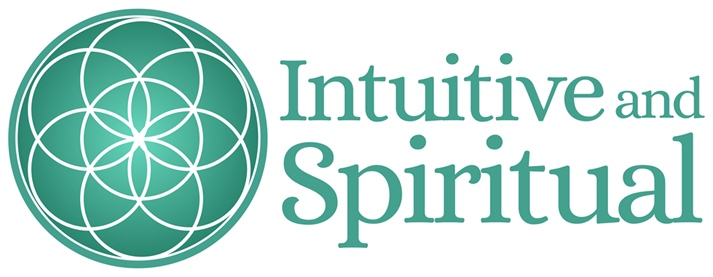
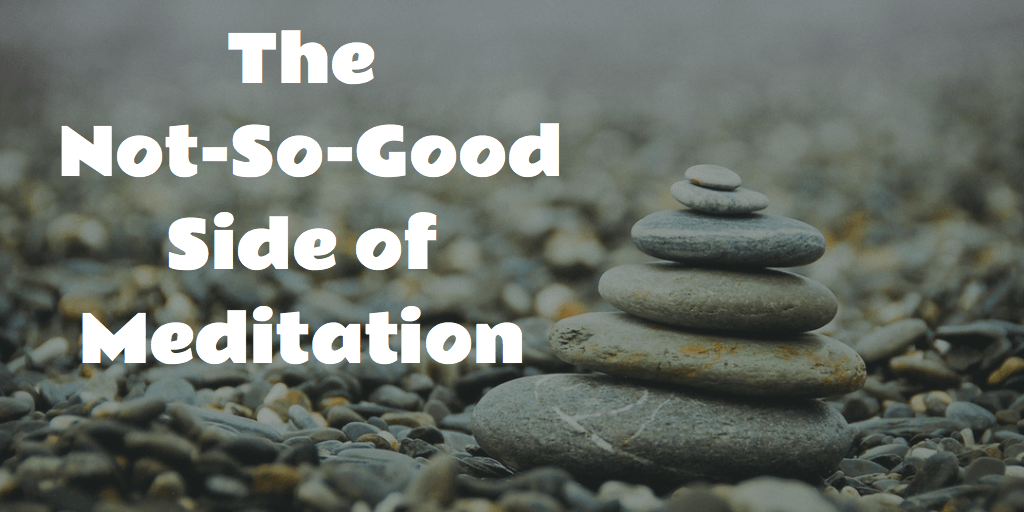
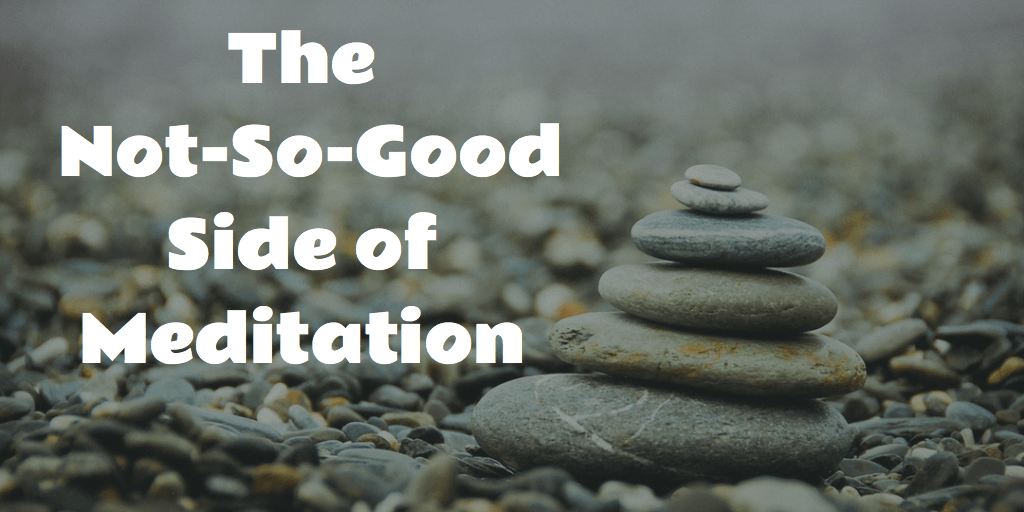
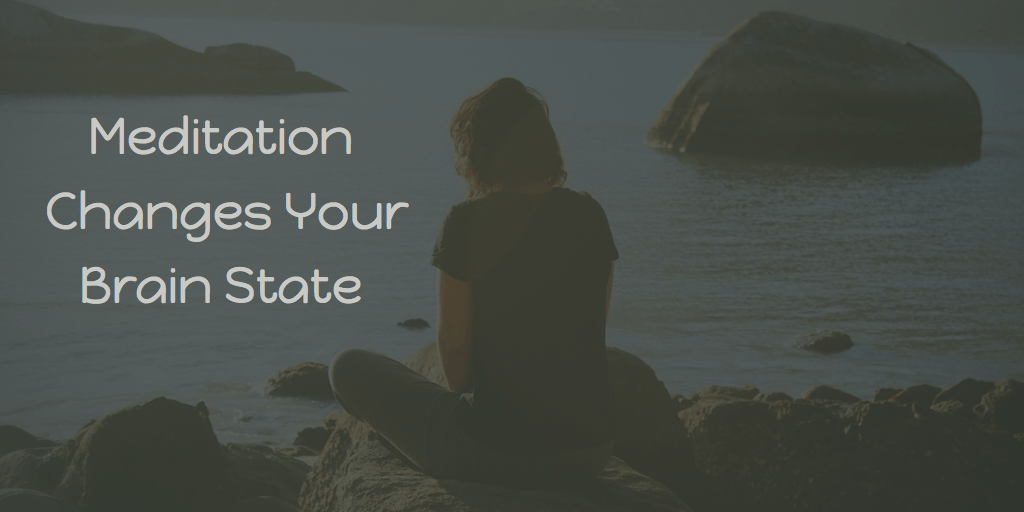
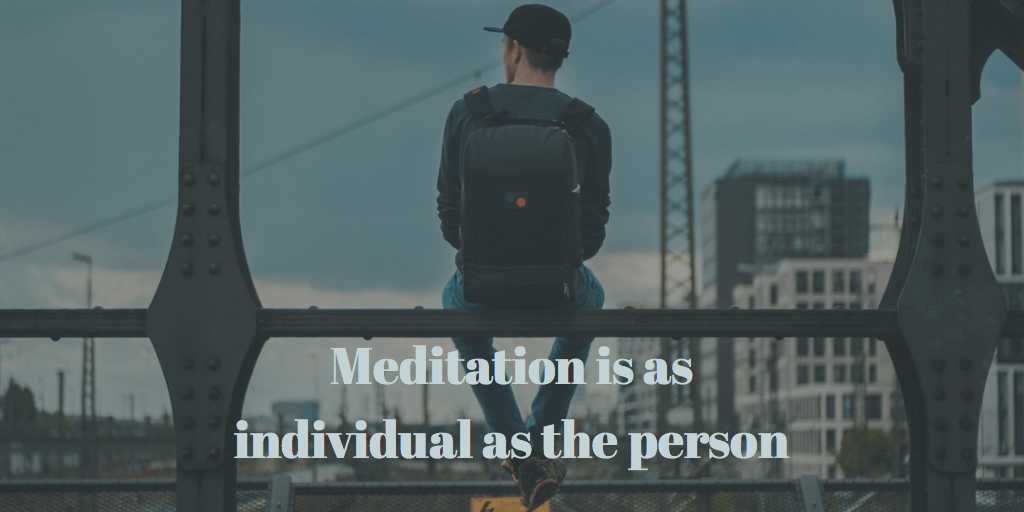
Truly would never have thought that meditation could cause anxiety as you described. But after reading this, I very much appreciate you sharing your own personal experiences as I think this could truly help and benefit anyone who may be experiencing something similar and not have awareness of this. Plus, also to give options here is also a huge help, too. Thank you my friend for sharing your own experiences and being so forthright here. Hugs and Happy Monday once again!! <3
Janine – hey there, sweet friend! It’s so funny…I never would have thought until I started doing the research for this that there could be drawbacks, but indeed there are. And that’s okay: it’s just another reminder to be gentle with ourselves, to listen to our own needs and honor them as we can. 🙂 Sending you big hugs and I hope you’ve had a wonderful week and that your Saturday is awesome! <3
I don’t have any way of relating to this, Lil Sis! I don’t feel anxiety. It is fascinating to read about, and I can feel for you and wish you well on your quest, but as far as knowing what you are experiencing….I just don’t know. 🙂 Hugs from your Big Bro!
Big Bro – that’s all right. We’re all different and have different things we do in this life. 🙂 LOL. I hope you’ve “experienced” a great week and here are some extra hugs for some extra energy. 😀
Dear Cynthia,
I appreciate your authenticity in sharing both the positive and negative aspects of meditation.
“Listening to one’s body” is key, as you have pointed out – in any aspect of our lives.
Wishing you a peaceful day and hugs too, Maria
Sweet Maria – thank you for your thoughts here. I do try to be transparent and authentic – even when I may be fearful. I honestly wasn’t sure how people would take this post, but I am pleased to see that it is helping others. 🙂
And with your background, I know you truly understand the meaning of “listening to one’s body” 🙂 🙂 Wishing you a peaceful weekend and big hugs! xo
Hi Cyndi, when I first read about this topic in your newsletter I was certainly intrigued. Now I read more in-depth about it here and do see the way it could affect anxiety. It’s a reminder to pay attention to what our body is telling us and use techniques that suit us, as we are all unique. Hugs to you for looking out for us <3 Have a wonderful, spiritual weekend!
Sweet Christy – yes, indeed! It’s all about meeting ourselves right where we are and loving and accepting ourselves for all that we are: the good and the things we’d like to improve. Thank you for your insightful comment. Sending you big hugs and wishes for a wonderful weekend! xoxo
Dearest Cynthia,
Reading this, straight away I knew that 13 yr old girl was yourself..
And So much of what you have said here resonates with me and my own journeying.
That shy child, who sort solace and solitude, and who didn’t want to rock the boat..
Who would give of herself and neglect her own wants..
So many times the books that would jump from shelves and appear at just the right time to nudge us in the right direction..
And trying out the various techniques in meditation..
So much of what you have written here I align with Cyndi.. So much…
Your advice is spot on… And each of us are individuals, and it takes time to explore and find that which suites our own needs, and energy..
For me.. I like to meditate in the morning.. I spend only 10 minutes, deep breathing, and then transfer that breath into my Qi Gong exercise..
Since I have been less active, I have noticed my muscle power has lost some strength.. And as the gardening winds down for winter I have had to take myself in hand.. Too much time sitting, either in front of the Laptop or knitting, or painting, is not allowing me to exercise properly..
So I have also built in a new regime into my daily practice..
My morning ritual while maintaining my daily 10 minutes as I sit light a candle, and hold my healing book of the names I write and countries, and all whom I send healing, positive energy out to. I then put on some lively instrumental music..
To which I do Zumba exercises too..And stretching.. ( I must get some instruction from my daughter on Yoga as she does that.) 🙂 But I finish with ten minutes of Qi Gong.. A routine that I have done for years, as I clear my aura, and bring in energy..
Meditation does not always have to be sitting in silence.. I began many years ago with listening to meditation tapes, of visualizations.. Having a vivid imagination, my mind easily was able to ‘See’, and pull in guidance this way. I learnt to connect to particular guides who would make themselves known to me during meditation.. And I would later ‘Feel’ their presence via thought waves, when I ‘tuned’ into their vibration.. Using our brain waves.. And I guess even though not realising our altered states..
Later these states were deepened as I developed Trance.. It took me a long while sitting in those silent trance states before I plucked up the courage to speak to my group in these trance sessions.. As I often would block it, as I was still present. And I wanted to be completely out of it.. But as my guides explained, there would always be part of Me in there, for they had to access my brain, my knowledge to transcribe what they wanted to speak about..
But these states for me got too intense.. And when a group member was more proficient at going into trance, I allowed him to develop and sat giving him energy instead..
We have progressed along a similar route of exploring chanting, drumming, affirmations etc, And some times our senses become very heightened.. Which is why even today, I have to take breaks from blogging.. I get emotionally charged by many of the people I connect with.. I have several whom have terminal cancer.. And all I can do is give of my energy.. Trying to be careful not to deplete our own is for those of us who are empathic sometimes a challenge…
We also have to be aware we are changing, as a species.. Our DNA is altering.. Our planet is evolving and so are we, And the many Sun spots and Solar flares that are right now intensifying are also having an effect.
I must ask you.. Do you get a kind of ‘Ringing in your inner ears’ and then a sort of silence.. I call these ‘Downloads’ as the cosmic energy is preparing us, We have internally within our Higher Selves ALL KNOWLEDGE.. It is there within at all times, it just needs us to learn to connect the right keys to access it..
This is how we channel.. And how people on different parts of the world who do not know each other can have a creative idea at the same time.. For they are accessing it via the energy that surrounds us all..
And that is why I found your other advice in a previous post about creating your group of guides from the people whom you admire who can still be present in their Earth Life.. Because their higher group souls are all connected and can connect to our group souls..
I have gone on long enough, but it is good that you are taking time out to destress in some fiction.. Allowing our minds to enjoy without pressure that some of our spiritual knowledge and books we read can also bring..
Wonderful post Cynthia my friend.. A delight to read, and contribute.. And sorry I always get side tracked and go off on a tangent..
<3 Much love
Sue xxxx
Sue – I don’t ever doubt your perception and ability to discern what your intuition tells you: YES! It’s not surprising that you guessed that that 13 year-old was me. 🙂 I love it that you’re such a kindred spirit. And you have taught me and enlightened me on this journey more than you will ever know…
I haven’t been to more than a couple QiGong classes, but I want to take more. Doing the LIFE Project has been inspiring, but I have found in the last six months that it takes a lot of time. I intend to see it through, but I do look forward to having more time on my hands in March and April next year. 🙂 And it’s not a bad thing: this project was designed to get me out of my comfort zone and I have succeeded in doing so. But will look into doing more QiGong as soon as time permits.
It’s funny: time. I have a bad habit of carving out time for myself and then I’ll fill it with other “wonderful” things. I just love life so much and want to experience so many beautiful things.
But then again, I had my conference yesterday and after my workshop, I was speaking to a woman who immediately labeled me as a Gemini. I told her that I was born on the cusp, so I’m a Taurus by ten minutes, before the sun passed into Gemini – so I have a lot of Gemini qualities. This means that I flitter from interest to interest and my creative channels always seem to be on overdrive. It’s a good thing I meditate, or I think I’d live in the clouds, floating and billowing away in bliss. Hehe.
I completely understand about the idea of the emotional energy and what we feel. I feel the energy from people around me. I’m usually a pretty happy person (unless I’m in some sort of toxic situation) and always intend to smile and make others feel at ease. I was thinking about that at our workshops this weekend for the conference. But as soon as a negative presence hits my radar, I have such trouble with it. It affect me in my dreams, in my waking state, and my thoughts roll the negative energy (whether it’s how someone acted, what they said, how they feel, or how they might feel towards me) around and around until I have to distract myself with going into another fantasy world (such as reading books) or dulling my senses by playing – yes, I know, it’s not the greatest solution – video games. Reading fiction is much healthier, hehe. I also go exercise to eke out that stress. If I meditate while I’m agitated, sometimes it seems to amplify it, so I don’t tend to meditate, even though I do try to be mindful, take breaths and bring myself to the present.
All my life I’ve been called “sensitive.” I used to think it was a drawback, but now I have embraced it as one of my strengths. I imagine you’re probably similar in this regard.
When you mentioned the trance stuff above, I immediately wondered if you have worked on using psychic energy: if you have developed a way to contact spirits. It might seem a bit of a strange question, but I’ve long since been curious about it and have attempted to do so once or twice, always making sure to hold a grounding stone, and smoke-cleanse (smudge) beforehand, and asking for white light protection. I think all of us are psychic, but developing that ability can be tricky, I think. My sister has dreams that foretell future events, but she never knows which ones remain dreams and which will come true until they actually do. She also has to be closely connected to those around her and we have lived over a thousand miles apart for 15 years, meaning that she won’t dream about me or other family members who are far away. It’s so interesting.
I have heard the “ringing” you speak about, but never knew what it was. That’s incredible. Though I’ve meditated a long time, I still feel like a fledgeling when it comes to these things. I have thought about going to see a medium just to see what that would be like to see if I can discern some of the things that are happening around me.
And you know, thank you for the gentle reminder about consulting with my spirit council. I haven’t done that in awhile and I like the idea of their wisdom bestowing me with answers…
Thank you so much for your thoughts here, Sue. You have given me many wonderful things to think about. I hope you’ve had a wonderful week! Sending hugs, xoxo
This was a very interesting read Cynthia.
I wrote a long comment, but can’t get that to post, so will connect with you over on FB.
Yvonne – thank you so much! It’s my goal this weekend to look into the commenting thing: you’re not the first person to experience that issue and it’s weird, too, because it’s the standard jetpack plugin that comes with WordPress. But, I’m sure I’m not the only one to ever have this issue, lol.
Thank you for your wonderful comment over at FB. I love that we’re connected over there and I very much enjoyed what you had to say and all your insights regarding meditation. I’ve gotten back to a normal routine and I’m trying different things to manifest different things in my life, too. It’s pretty incredible what meditation can do for us. 🙂
Sending you hugs and wishes for an awesome week! xoxo